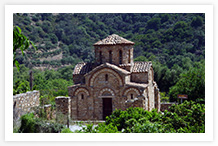Fodele - Lake Kournas - Chania
Tour Details:
- Total Distance:
- Estimated Duration:8 hours
- Price from:353,00 € *
* The price is set only for departing from Heraklion city. For departures from other locations, please contact us for advising the price.
Tour Description:
- Departure from Heraklion Airport/Port or from a specified location
- Stop at Fodele village
- Stop at lake Kournas
- Stop at Chania
- Return to Heraklion
Notes:
- The default stops may change according to your wishes, consult your driver.
- Entrance fees for archaeological sites/museums, escorts/guides and meals are not included.
- This tour can be combined with a visit to the market of Chania for shopping.
Our Location:
Contact Info:
- Limo & Bus
- 51 Dimokratias Ave.
713 06, Heraklion, Crete, Greece - Telephone:+30 2816 007640
- Mobile:+30 6978 625116
- Email:info@limos.gr
- Athens Branch Office
- 2 Ethnarchou Makariou St.
Alimos, Athens, Greece










